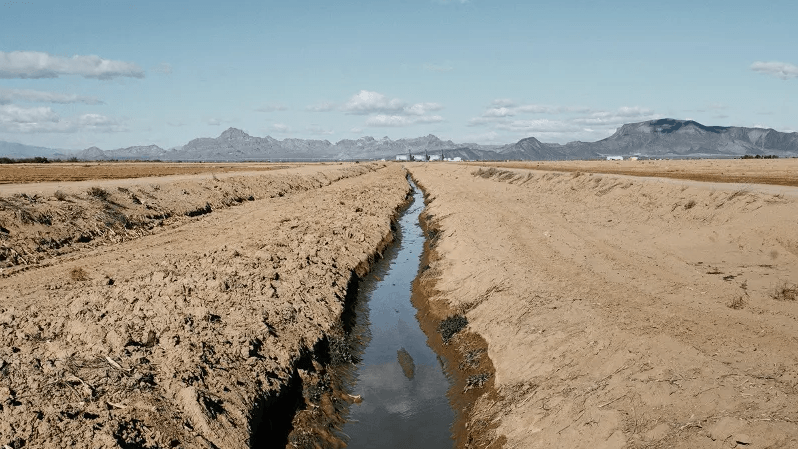VJEL Staff Editor: Taylor Tavormina
Faculty Member: John Echeverria
Looming United States Water Wars
States have long had disputes over the use of interstate waterbodies with neighboring states, but the number of these disputes is now at an all-time high and the number of these disputes may well increase in the future. Water covers over 70% of Earth’s surface, but only a tiny fraction of this water is accessible fresh water suitable for human use. Moreover, much of the United States population is concentrated in relatively arid parts of the country. In addition, the latest reports from the U.S. Climate Science Program predict lower precipitation in many parts of the country during certain periods of time. A predictable consequence of these trends is more legal conflict between States over shared water resources.
Background
Congress on rare occasion steps in to resolve water disputes between States through legislation. The most common method for resolving interstate water allocation disputes are interstate compacts or so-called equitable apportionment proceedings. If States can agree over allocation of water supplies between themselves, Congress can approve the agreements pursuant to the Compact Clause and make them binding on the States. When States fall into disagreements over how to read a compact, they can turn to the U.S. Supreme Court for help, which has original and exclusive jurisdiction over all lawsuits between different States. In the absence of a compact, States can file suit against neighboring States directly in the Supreme Court to obtain an equitable apportionment of interstate waters. Resolving interstate water disputes is very difficult and time-consuming. The Court routinely appoints Special Masters, who are often retired lawyers or law professors, to handle the cases on a day-to-day basis and make recommendations to the Court.
The following interstate water cases currently pending before the Supreme Court show the complexity and diverse character of these dispute.
Supreme Court Litigation
Mississippi v. Tennessee, Supreme Court Case No. 143
In 2014, the State of Mississippi sought permission from the Supreme Court to proceed with a case against the State of Tennessee arising from the City of Memphis’s alleged over-pumping of water the Sparta-Memphis aquifer that underlies the two statesas well as other states in the region. Mississippi contends the city’s intensive pumping has created a “cone of depression” in the aquifer causing water to flow from beneath Mississippi across the state line to Tennessee. The case is pathbreaking because it is the first interstate water case to focus on interstate allocation of groundwater. The case is also unusual because the States do not even agree on the nature of their dispute. Mississippi has not sought a traditional equitable apportionment because it claims absolute ownership of “its” groundwater and contends Tennessee has engaged in a “trespass” upon its rights. Tennessee, by contrast, defends by arguing that equitable apportionment doctrine should apply to interstate aquifers in the same way it applies to interstate surface waters. Tennessee suggests Mississippi’s case must be rejected because Mississippi has made no equitable apportionment claim. The Special Master, following years of fact finding and legal argument, is poised to issue a report in the near future, setting up the issues for presentation to the Supreme Court.
In 1938, the States of Colorado, New Mexico, and Texas signed the Rio Grande Compact allocating this important river that not only supplies water to the region but also serves as the international boundary between the United States and Mexico. In 2014, Texas initiated a compact enforcement action in the Supreme Court alleging that New Mexico has allowed surface water diversions and pumping of hydrologically connected groundwater in certain locations along the river in violation of the Compact, reducing the volume of water reaching Texas. New Mexico countered by asserting that it has acted within its rights under the Compact. To make matters more complicated, the United States has intervened on the side of Texas and contends that New Mexico’s compact violations impair its ability to deliver water in accord with a treaty between the United States and Mexico. Following a 2018 decision affirming the right of the United States to intervene in the case, the Supreme Court sent the case back to the Special Master for fact finding which is currently ongoing.
Florida v. Georgia, No. 142.
For several decades the States of Florida and Georgia engaged in ultimately fruitless efforts to form a compact dividing up the flows of the Apalachicola-Chattahoochee-Flint River System, which flows from the northern tip of Georgia southward to Apalachicola Bay in Florida. In 2012, in the wake of this failure, the State of Florida initiated a case before the Supreme Court seeking an equitable apportionment of the river. The case was assigned to a Special Master who, after years of deliberation, concluded that Florida’s case should be dismissed. In 2018, in a 5-4 decision, the Supreme Court rejected the Special Master’s recommendation, ruling that he had applied too high a standard of review in determining whether Florida was entitled to relief. The Court remanded the case for further proceedings before a second Special Master, who issued a comprehensive report in December 2019, again recommending that Florida’s case be dismissed. The second Special Master concluded that Florida failed to prove that upstream diversions harm the oyster fishery in Apalachicola Bay and that granting a water allocation to Florida would not produce benefits in Florida that outweigh the economic costs in Georgia. The Special Master submitted the report to the Supreme Court, which is expected to schedule oral argument or otherwise take action in the near future.
Texas v. New Mexico, No. 1949
In 1949, Congress approved the Pecos River Compact between the States of New Mexico and Texas. Over the years the Pecos River Compact has given rise to several conflicts that have required Supreme Court attention; in particular, faced with intractable deadlock on the Pecos River Commission, the Supreme Court took the unusual step of appointing a permanent “River Master” to oversee implementation of the compact. The latest controversy arising from this compact involves an interesting but relatively narrow “accounting” question. In 2014-2015, after a tropical storm drenched the region, the State of Texas asked New Mexico to store excess flood waters in a reservoir in New Mexico on a temporary basis. While the water sat in the reservoir in New Mexico, its volume inevitably shrank as a result of evaporation. After the water was eventually released downstream, the question arose whether the water loss due to evaporation should be charged to New Mexico or Texas. The States attempted to resolve this accounting dispute between themselves, but that effort failed. They referred the issue to the Water Master, who ruled in favor of New Mexico. On October 5, 2020, the first day of the new term, the Supreme Court heard oral argument on Texas’s challenge to the River Masters’ conclusion. The Court is expected to issue its decision soon.
Problems
The current process in the United States for resolving interstate water disputes has some serious weaknesses. First, it has become increasingly difficult to establish new interstate water allocations. Members of Congress avoid enacting legislation to resolve interstate water conflicts because of their understandable reluctance to intrude in essentially regional conflicts. No States have successfully negotiated new compacts apportioning interstate waterways since 1978. In recent decades, States have not had any better luck with equitable apportionments, and it now seems unlikely the outcome in Florida v. Georgia will break this pattern. The Supreme Court has been more successful in resolving disputes over how to interpret interstate compacts. However, these proceedings are often time-consuming and expensive. It might be questioned whether some compact enforcement cases, such as the pending accounting dispute arising from the Pecos River Compact, are worthy of the time and attention of the Supreme Court. The Court has broad discretion over whether to agree to adjudicate interstate water cases within its original jurisdiction and the Court may well be reluctant to expand its water docket. Meanwhile, the Nation’s growing population and the increasing risk of serious drought due to climate change, raise the prospect that interstate water conflicts will become more frequent. It is debatable whether the current system for resolving interstate water conflicts is adequate to deal with the nation’s looming water wars.
Importance and Looking Forward
Water scarcity is an ever worsening problem and can lead to growing conflicts between States over their shared waters. This looming challenge highlights the importance of achieving national and international progress in controlling carbon emissions and capping the pace of climate change. Many communities in the United States already have made impressive progress in conserving water, and redoubled efforts to reduce water use can help avoid future interstate water conflicts. It is worthwhile to consider how to reform the process for resolving interstate water conflicts, including reducing the cost, time, and effort that are invested in these cases. Negotiation, mediation and arbitration are all techniques that can potentially expedite the resolution of these disputes. Enhanced data collection and stream flow modelling capabilities can reduce uncertainties and thereby enhance the prospects for informal resolution of interstate water conflicts.













